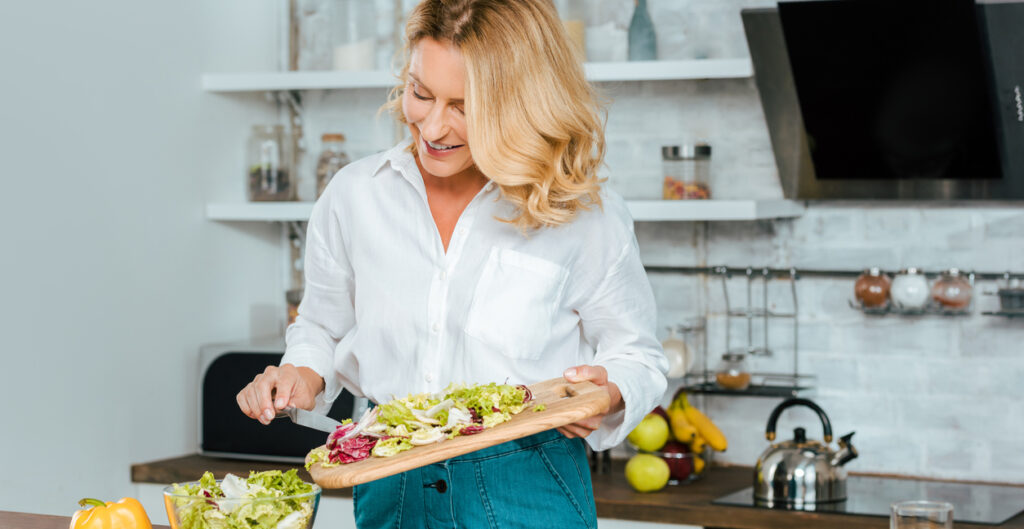Spaghetti Bolognese: it’s the one dish that most people know how to make. It’s a go-to weeknight family meal, a staple in Australian households, and – for many people – it’s also a food of comfort.
But is it good for you? Well yes… and no. You can make this dish as healthy or as unhealthy as you like. A giant bowl of pasta with a meaty sauce and cheese is not a very balanced meal. While a small bowl of wholemeal pasta with veggie-packed sauce and a good portion of salad will give you all you need to keep your body working well.
Here are my seven ways to make your favourite dish health friendly:
1. Look at your portions
Look at your plate: half should be vegetables, a quarter should be protein, and a quarter should come from some source of carbohydrate (preferably high fibre). This can be applied to our spaghetti dish: Fill half your plate with greens. Next add your pasta (that’s your carb source) to fill a quarter of your plate. Then add your sauce (if you’re using mince or lentils then this is your source of protein). Done! Takeaway message: pile on the veggies.
2. Make it high fibre
Wholemeal pasta is not to everyone’s liking. I personally like the slightly denser texture and nutty flavour, so it’s worth a try if you have never had it before. If wholemeal pasta isn’t your thing, you could try wholemeal spelt pasta or mung-bean or black bean noodles. Regular pasta is also available with added fibre too.
3. Get on the zoodle bandwagon
I’m in love with zoodles! AKA zucchini noodles. Try mixing up your regular spaghetti with zoodles in a 50:50 ratio, or use them to replace the pasta completely. To make zoodles, buy a cheap Julienne tool (available from most supermarkets for about $10) or a vegetable spiraliser (from homeware shops or on EBay for around $50). You can either eat the noodles raw or gently heat in a fry pan with your chosen sauce. You don’t even have to stop at zucchini; carrot, cucumber and sweet potato also work well.
4. Veggify your sauce
Lighten up your sauce and boost your veggie intake by adding finely chopped or grated veg into your pasta sauce. Try adding grated carrot or zucchini; finely diced capsicum celery or mushroom; or shredded kale or spinach. Anything you like or have on hand will work.
5. Go lean
If you’re using meat, buy the best you can afford. The higher the grade, the leaner the mince.
6. Love your legumes (and pulses)
Western societies tend to over consume meat. We only need a small amount to meet our daily protein requirements. Legumes and pulses are good non-meat sources of protein with the added benefit of soluble fibre to help you stay full and keep your gut healthy. They have also been proven to aid weight loss and improve heart health.
Try adding a tin of drained red kidney beans at the end to your usual pasta sauce, or adding a handful of red lentils to your sauce, allowing 20 minutes simmer time. This will increase the fibre in the sauce and reduce the cost of making it!
7. Go low salt
Pre-made bottled pasta sauces and tomato pastes can be quite high in salt. Make your own sauce to control over what goes in. If you do go down the bottled sauce avenue, look for less than 120mg sodium per 100g.
Growing up surrounded by fresh produce and delicious food in the Adelaide Hills inspired Gabrielle O’Dea’s love of food. Now, the qualified dietitian is spreading her love for beautiful food by dishing gorgeous health-conscious recipes at nourishtheday.com. We can’t stop drooling over her Peanut Butter Cookie Slice – check it out!









